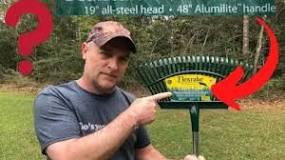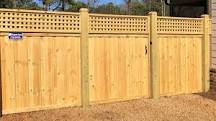Absolutely, you can dethatch your lawn with a bow rake! While it might not be the most efficient tool for the job, it can definitely get the work done if you’re up for a little manual labor. Using a bow rake to dethatch is all about technique and patience, but if you’re looking for a workout and some fresh air, it could be a satisfying way to tackle thatch buildup.
What is Dethatching?
Before diving into the how-tos, let’s quickly cover what dethatching actually means. Thatch is that layer of dead grass, roots, and other organic material that builds up on your lawn. Too much of it can suffocate your grass and lead to all sorts of lawn problems. Dethatching helps to aerate the soil and allows nutrients, water, and air to reach the grass roots more effectively.
How to Dethatch with a Bow Rake
Timing is Everything
First off, timing matters. The best time to dethatch is during the growing season—typically spring or early fall. This way, your grass can bounce back quickly after the dethatching process.
Technique Matters
Using a bow rake isn’t just about brute force; you’ve got to have some finesse:
- Angle Your Rake: Hold the rake at an angle so you can pull up thatch without tearing up your healthy grass.
- Work in Sections: Don’t try to tackle your entire lawn at once. Break it down into manageable sections.
- Use Short, Firm Strokes: Instead of long sweeps, use short strokes to lift the thatch effectively.
Clean Up Afterward
Once you’ve raked up all that nasty stuff, don’t forget to clean up! It’s important to remove the debris from your lawn so it doesn’t just settle back into the soil. You might want to bag it or compost it if it’s not too thick.
Benefits of Dethatching
Dethatching has several perks:
- Improved Airflow: Helps your grass breathe better.
- Better Water Absorption: Water can penetrate deeper into the soil.
- Healthier Grass: Promotes stronger growth by allowing nutrients to reach the roots.
Conclusion
So there you have it! Dethatching with a bow rake is totally doable if you’re ready for some hands-on work. Just remember to be patient and use the right techniques, and you’ll be on your way to a healthier lawn in no time!
FAQ
Can I dethatch any type of grass with a bow rake?
Yes! Most types of grass can be dethatched with a bow rake. Just be cautious with delicate varieties; they might need a gentler touch.
How often should I dethatch my lawn?
It really depends on your lawn’s condition. Generally, once every couple of years is enough for most lawns. If you notice a lot of thatch buildup, you might want to do it more frequently.
Is there an easier way to dethatch?
For sure! If you’re not keen on using a bow rake, consider renting or buying a power dethatcher. They make the job way quicker and require less elbow grease.
What should I do after dethatching?
After dethatching, it’s a good idea to fertilize your lawn and water it well. This helps promote recovery and encourages new growth.







